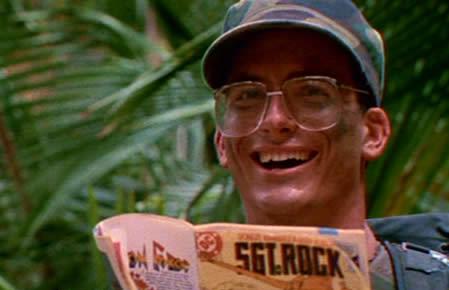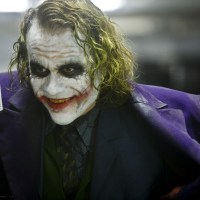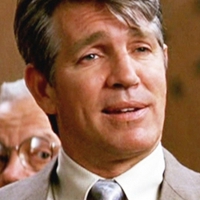jye4ever
Broke and happy
KF: Even before The Avengers came out we were anticipating - not that level of success, because you’re foolish if you anticipate THAT - but we thought if it worked it would be because people thought it was cool to see all the characters together. If we want to continue making movies after that we’d have to prove it’s cool to see the characters on their own again - and we’d have to prove it fast!
To your other point - we don’t hire Shane Black to be anonymous. Why do that? There are plenty of people you could hire to be anonymous. This is the first film I’m producing that’s a part 3. The first that Marvel Studios is producing on our own as a part 3. There have been very good part 3s, and some not-so-good part 3s. I didn’t want to fall into that trap. I wanted, if nothing else, to make a unique standalone part 3 that could attempt to be unique and fresh as the first one.
DF: Is Tony Stark a Shane Black character?
SB: If interpreted in a certain way, yes. If Tony Stark’s playboy bravado and fast lifestyle is portrayed in conflict with his churning, completely restless brain and that you interpret it as ‘Oh I see why he gambles so much, why he drinks and why he chases women - he’s trying to put a lid on that chatter.’ But he can’t resist ultimately who he is. If you see him as a character trying to resist his essence, trying to resist who he is, wow, that becomes a very interesting character to me.
DF: You and Robert Downey Jr have worked together before, nailing it in Kiss Kiss Bang Bang. How much does that relationship give Downey the faith to let you take Tony in interesting places this time? Without spoiling it, Tony isn’t really the guy who beats the bad guy at the end.
SB: To his credit Robert doesn’t need that. Robert needs to sit with me and Drew Pearce and sometimes Marvel and we need to come up with things we think are interesting for that character. Our sensibilities, if they’re properly aligned, will allow for a collaboration that produces good result. I think Robert Downey is reliable to the extent that he has good instincts. I like to work with people who don’t admire me but who I admire. I like to be on my toes. That’s why I like to work with Marvel - they keep me on my toes. They get me thinking in different ways. Similarly with Drew, who I came to love very much - at first I didn’t know who the hell he was - I came to like that collaboration. Robert and Drew on set were people I admired. I always get a kick out of that. lt always produces good results. It’s when I get with people that I think are there for the buck or are lazy or are not trying, I get mad at them. That’s not the case here. These people are investing their energy, their lives, their essence into this stuff. They take it seriously. Robert takes this seriously.
DF: Iron Man 1 was a call to arms for Marvel Phase One. It introduced the tone, it showed that these would be character pieces, and then there was Nick Fury, who introduced the shared universe. Is Iron Man 3 a call to arms for Phase Two?
KF: I think we say that about Phase One because you can see the whole now. But I think Cap is very different in a lot of ways than Iron Man was, Thor was very different and Avengers was different from all of them. I think the notion of proving that each individual movie can stand apart, hopefully there being surprises and not knowing what way the movie is going to go, that’s Phase Two. But I hope Phase Two’s success comes from them being separate franchises, all treated as their own franchises, that happen to connect. Cap will be the one with the most connective tissue by far, because Cap is stuck in the modern day. He can’t go to Malibu, he doesn’t have a lot of friends, he can’t go back to Asgard. That one ties into it more. There is an overarching thing that isn’t apparent Iron Man 3, but it ties into what Joss is doing.
To your other point - we don’t hire Shane Black to be anonymous. Why do that? There are plenty of people you could hire to be anonymous. This is the first film I’m producing that’s a part 3. The first that Marvel Studios is producing on our own as a part 3. There have been very good part 3s, and some not-so-good part 3s. I didn’t want to fall into that trap. I wanted, if nothing else, to make a unique standalone part 3 that could attempt to be unique and fresh as the first one.
DF: Is Tony Stark a Shane Black character?
SB: If interpreted in a certain way, yes. If Tony Stark’s playboy bravado and fast lifestyle is portrayed in conflict with his churning, completely restless brain and that you interpret it as ‘Oh I see why he gambles so much, why he drinks and why he chases women - he’s trying to put a lid on that chatter.’ But he can’t resist ultimately who he is. If you see him as a character trying to resist his essence, trying to resist who he is, wow, that becomes a very interesting character to me.
DF: You and Robert Downey Jr have worked together before, nailing it in Kiss Kiss Bang Bang. How much does that relationship give Downey the faith to let you take Tony in interesting places this time? Without spoiling it, Tony isn’t really the guy who beats the bad guy at the end.
SB: To his credit Robert doesn’t need that. Robert needs to sit with me and Drew Pearce and sometimes Marvel and we need to come up with things we think are interesting for that character. Our sensibilities, if they’re properly aligned, will allow for a collaboration that produces good result. I think Robert Downey is reliable to the extent that he has good instincts. I like to work with people who don’t admire me but who I admire. I like to be on my toes. That’s why I like to work with Marvel - they keep me on my toes. They get me thinking in different ways. Similarly with Drew, who I came to love very much - at first I didn’t know who the hell he was - I came to like that collaboration. Robert and Drew on set were people I admired. I always get a kick out of that. lt always produces good results. It’s when I get with people that I think are there for the buck or are lazy or are not trying, I get mad at them. That’s not the case here. These people are investing their energy, their lives, their essence into this stuff. They take it seriously. Robert takes this seriously.
DF: Iron Man 1 was a call to arms for Marvel Phase One. It introduced the tone, it showed that these would be character pieces, and then there was Nick Fury, who introduced the shared universe. Is Iron Man 3 a call to arms for Phase Two?
KF: I think we say that about Phase One because you can see the whole now. But I think Cap is very different in a lot of ways than Iron Man was, Thor was very different and Avengers was different from all of them. I think the notion of proving that each individual movie can stand apart, hopefully there being surprises and not knowing what way the movie is going to go, that’s Phase Two. But I hope Phase Two’s success comes from them being separate franchises, all treated as their own franchises, that happen to connect. Cap will be the one with the most connective tissue by far, because Cap is stuck in the modern day. He can’t go to Malibu, he doesn’t have a lot of friends, he can’t go back to Asgard. That one ties into it more. There is an overarching thing that isn’t apparent Iron Man 3, but it ties into what Joss is doing.

















 That's amazing! I think ignoring the 100,000 or so of us who would possibly even know/care about it was the way to go.
That's amazing! I think ignoring the 100,000 or so of us who would possibly even know/care about it was the way to go.
